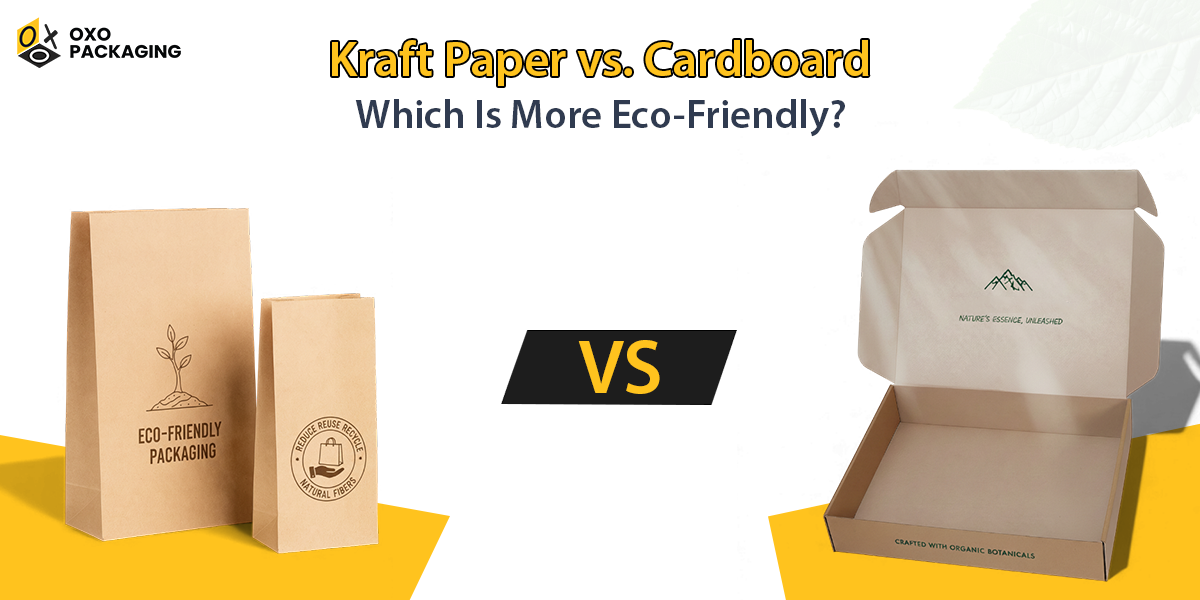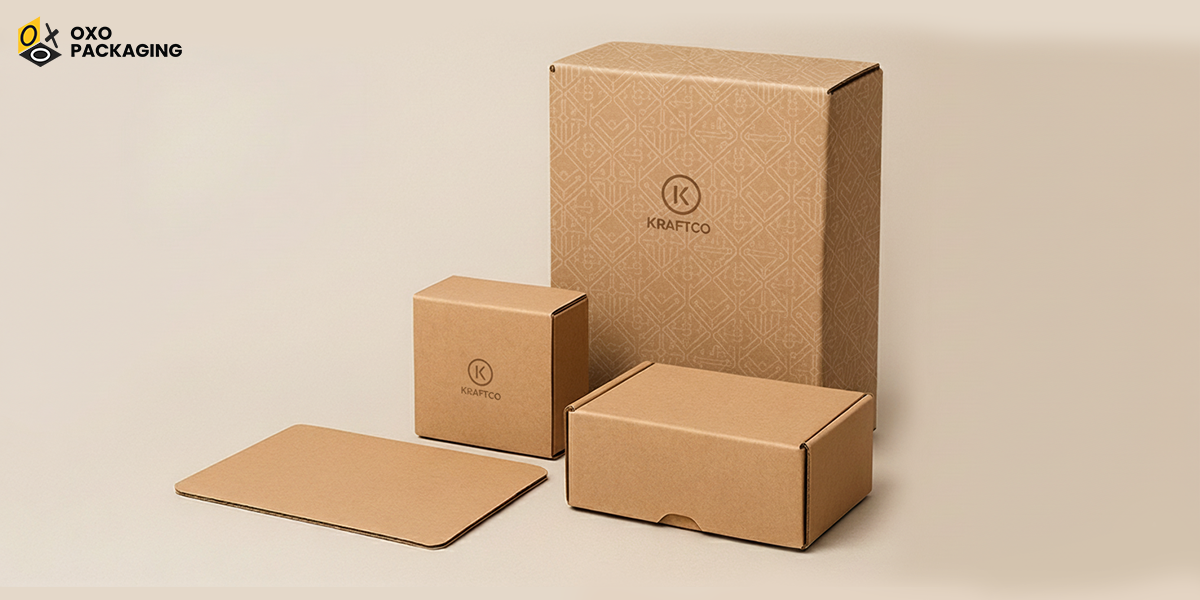Kraft Paper vs. Cardboard: Which Is More Eco-Friendly?

Kraft and cardboard are both the backbones of the vast packaging industry. And at the surface level, they look alike, too. Both kraft and cardboard are similar in many ways; however, they have unique factors that make kraft different from cardboard.
In general, both kraft and cardboard are largely viewed as eco-friendly packaging materials that are both recyclable and compostable. Let's dig deep into this blog to have a better understanding of which of the two wins the eco-friendly packaging game.
Kraft

The term “kraft” is originally derived from German, referring to strength, which perfectly sums up the organic, lightweight packaging material. The paperboard is produced by the chemical pulping method, which is generally known as the “kraft process”. The kraft paper obtained as a result is unbleached and robust, yet a sustainable paperboard material.
Kraft offers a timeless elegance to the packed items with the rustic charm that the brown color exudes. The brown color and the irregular texture of kraft are due to the unbleaching, which entices eco-conscious buyers with the organic appeal, with earthy brown tones.
Cardboard

Cardboard is the packaging material that is made from paperboard, known as the chipboard. Cardboard can be single-layered or multilayered paperboard that has high durability and strength, offering robust packaging to the packed items.
Cardboard comes in a variety of thicknesses and is highly recommended for the use in shipping, retail, and e-commerce packaging.
Comparison in terms of Sustainability
Both packaging materials are known for the sustainability, as both offer high recyclability and can be reused frequently. Let's look closely at which of the two materials lacks a bit in terms of sustainable packaging.
-
Raw Materials and Manufacturing Story Explained
The key difference between the kraft and cardboard lies in terms of raw material composition and processing.
Kraft paper is made from the kraft process, which transforms the wood into pulp involving the use of the heat and chemicals. This process removes lignin, keeping the strong cellulose fibers. The kraft produced as a result is highly durable, tear-resistant, and biodegradable.
Cardboard paper is made from wood pulp or recycled paper waste, pulping it into a slurry. Which is then converted into paper form by drying them into large sheets. The sheets are then made fluted, wavy by passing them through a corrugator machine. The sheets are then cut, creased, and folded into boxes.
-
Carbon Footprint and Energy Consumption Analysis
Kraft paper is fully recyclable, easily compostable, and highly biodegradable, and is not chemically processed, offering the most eco-friendly packaging material. Implying that kraft packaging has a carbon footprint and very low energy consumption.
On the other hand, cardboard is also highly recyclable, reusable. It is also safe to be recycled and reused multiple times without having any effect on the quality.
Although cardboard offers flexible customizations, the bleached or properly customized cardboard affects its biodegradability. Cardboard customized with refined customizations, like laminated or waxed, is not likely to offer sustainable packaging.
-
Biodegradability Win
Both paperboard materials exhibit superior biodegradability characteristics. Both kraft and cardboard naturally decompose within 2 to 6 months.
Unbleached kraft with organic appeal and earthy tones gets easily composted in home composting systems. The natural lignin in kraft facilitates quick biodegradability. Whereas, multilayered cardboard with personalized coatings can get fully biodegraded under industrial composting facilities.
-
Which is More Durable and Lightweight?
Both kraft and cardboard offer lightweight yet highly durable packaging. Both the packaging materials have high enough thickness to ensure safe product delivery.
Kraft is made of a thick paperboard, whereas cardboard’s thickness may vary according to the requirements. Cardboard may single single-layered or multilayered, and may have a variable number of fluted layers that add more durability to the boxes.
-
Flexibility in Customization
Kraft gives an organic look with the elegant brown color, giving a rustic charm to the boxes. To maintain the natural appeal, the customization options are quite limited. For instance, black ink graphics are used.
Cardboard, on the other hand, with fully bleached finishing, has a crisp surface that gives high-definition printing results. Cardboard can be flexibly customized into exclusive finishes, such as laminations, coatings, etc.
To Sum Up
Both paperboard materials, kraft and cardboard, rule over the packaging world. Both have their own pros and cons, which makes these boxes ideal in their own/different ways.
Kraft is a recommended choice for you if you prefer to go for an eco-friendly image, which wins over the nature lovers with the rustic image. Go for kraft if you want to offer lightweight packaging with the organic appeal.
Cardboard packaging is well-suited for you if you need to pack and deliver durable/heavy-duty products, flexible customizations, elaborate printing, and finishes.
Whereas, in terms of eco-friendliness, kraft is for the win.
Still need more guidance on which one to pick for sustainable packaging? No need to worry, we have you covered. Contact us to make a well-informed decision on which must be your top pick. We will give you the custom quote satisfying your needs.
Yes, the kraft paper is highly eco-friendly as it is made from wood pulp and is unbleached. Kraft paper is highly recyclable, reusable, and can be frequently recycled over a plenty of times.
Kraft is made from wood pulp and is usually a single paperboard sheet that is sufficiently thick. Cardboard can be made of single or multiple layers of chipboard. Cardboard is highly recyclable and can be derived from wood pulp or from fully recycled post-consumer content.
No, kraft is not more durable than cardboard. Kraft has enough thickness to offer robust packaging. But cardboard has high durability and strength, due to its multilayers of chipboard and variety in thickness. Recycled cardboard and the fluted layers make it more durable.




